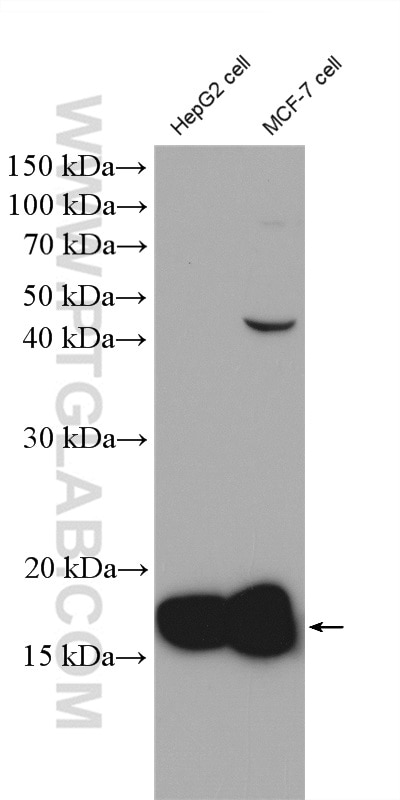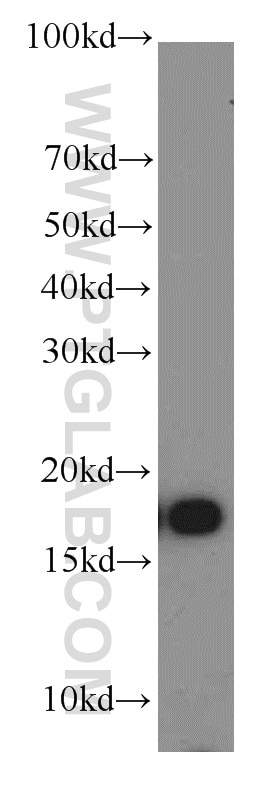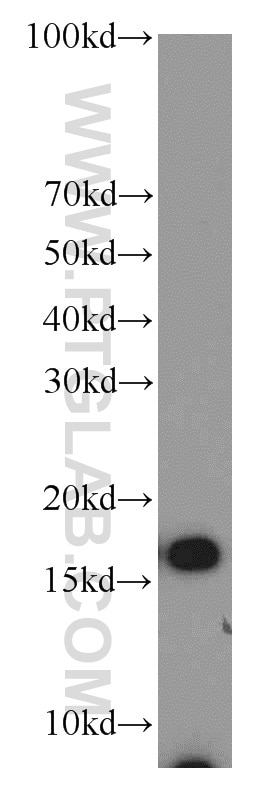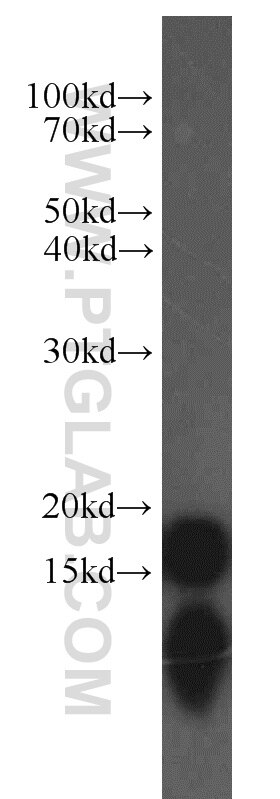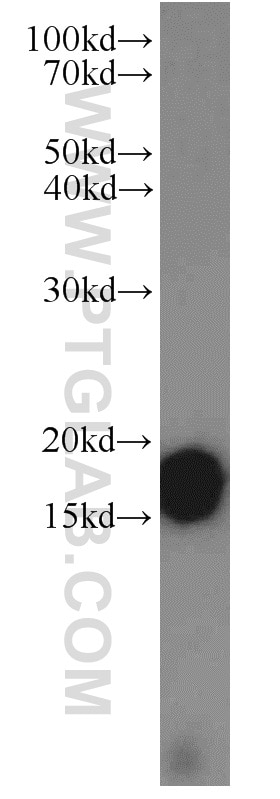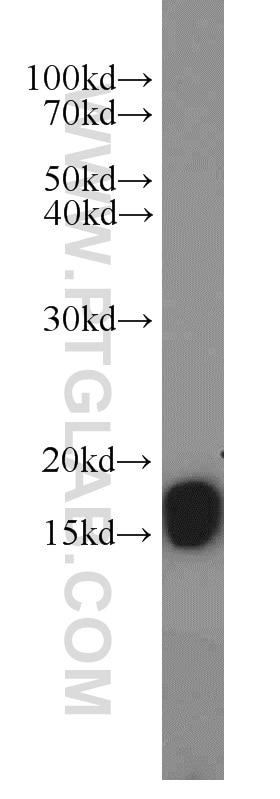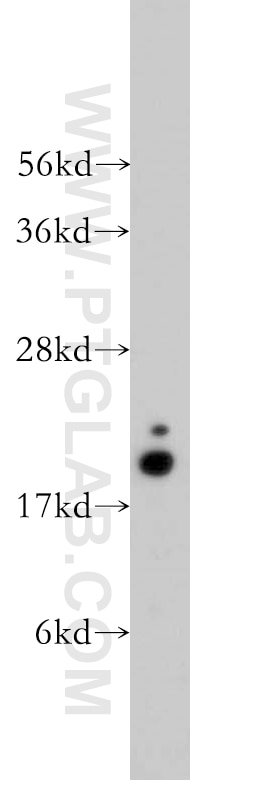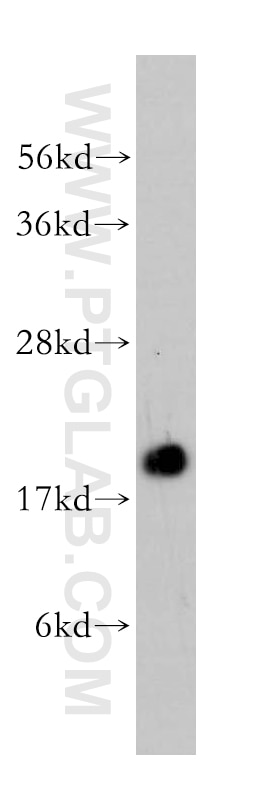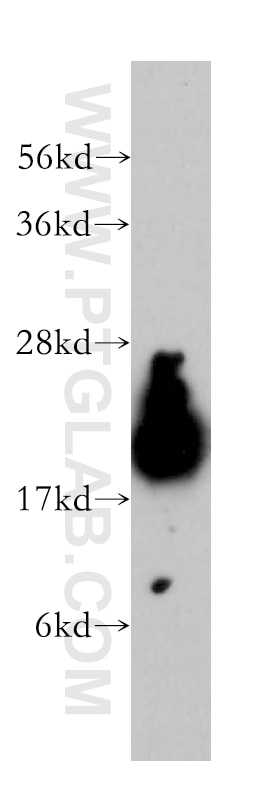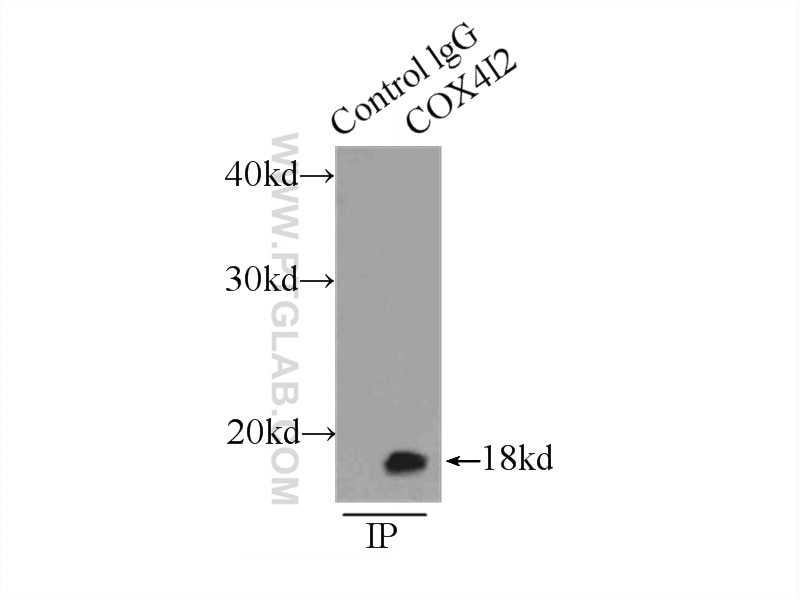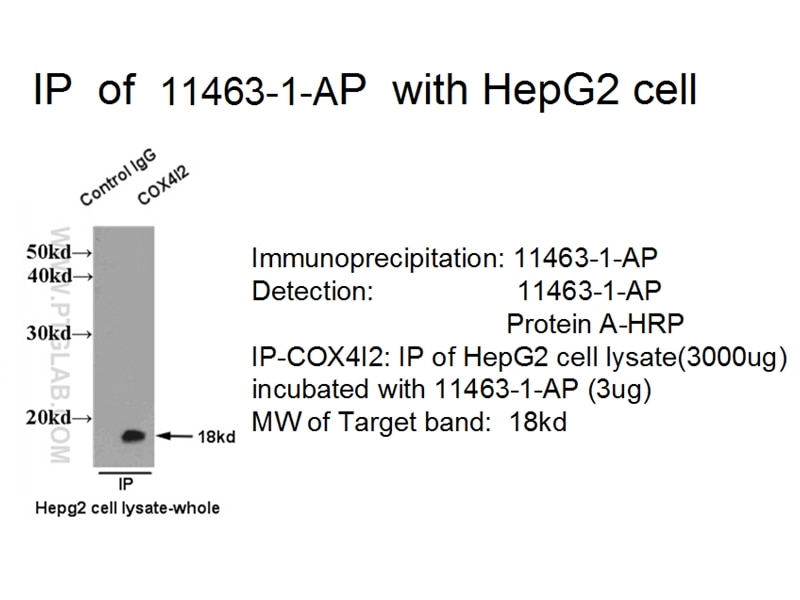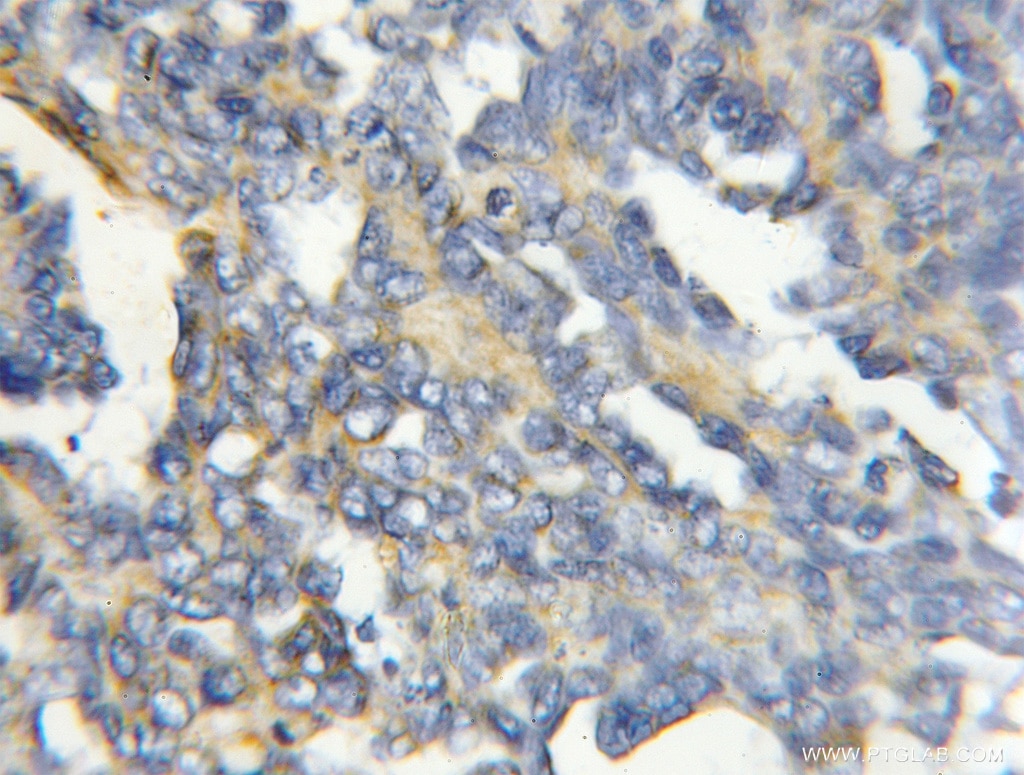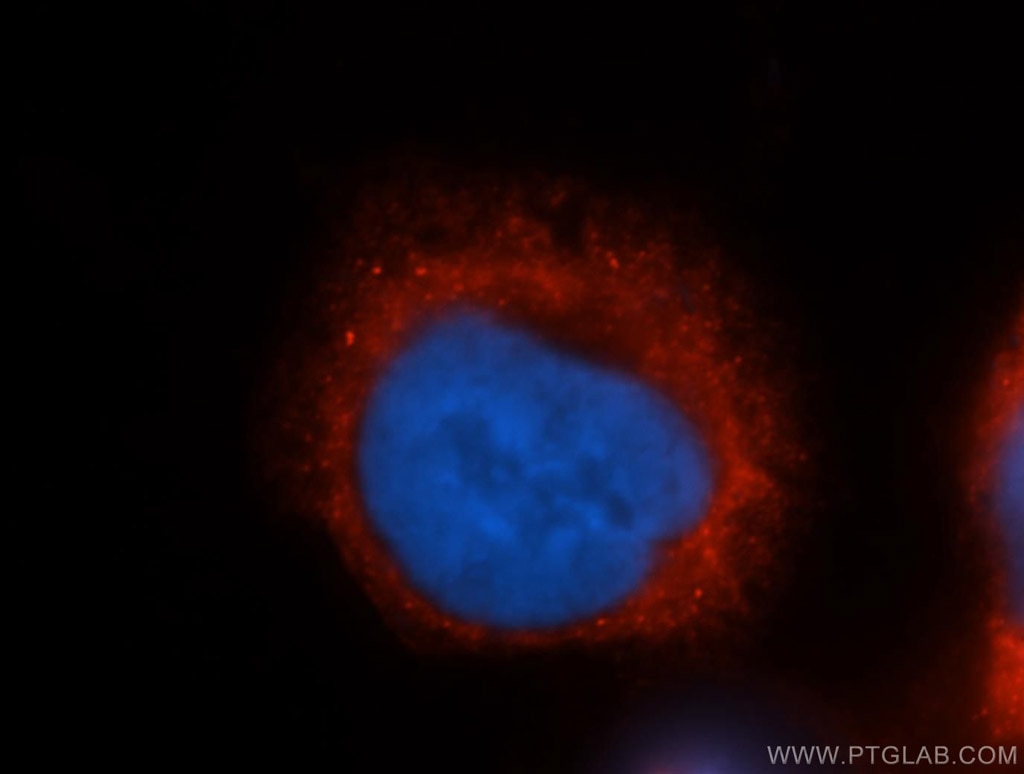- Phare
- Validé par KD/KO
Anticorps Polyclonal de lapin anti-COX4I2
COX4I2 Polyclonal Antibody for WB, IP, IF, IHC, ELISA
Hôte / Isotype
Lapin / IgG
Réactivité testée
Humain, rat, souris
Applications
WB, IHC, IF/ICC, IP, ELISA
Conjugaison
Non conjugué
N° de cat : 11463-1-AP
Synonymes
"COX4I2 Antibodies" Comparison
View side-by-side comparison of COX4I2 antibodies from other vendors to find the one that best suits your research needs.
Applications testées
| Résultats positifs en WB | cellules HepG2, cellules A375, cellules MCF-7, tissu cardiaque humain, tissu cérébral humain, tissu pulmonaire humain |
| Résultats positifs en IP | cellules HepG2 |
| Résultats positifs en IHC | tissu de tumeur ovarienne humain il est suggéré de démasquer l'antigène avec un tampon de TE buffer pH 9.0; (*) À défaut, 'le démasquage de l'antigène peut être 'effectué avec un tampon citrate pH 6,0. |
| Résultats positifs en IF/ICC | cellules HeLa |
Dilution recommandée
| Application | Dilution |
|---|---|
| Western Blot (WB) | WB : 1:500-1:3000 |
| Immunoprécipitation (IP) | IP : 0.5-4.0 ug for 1.0-3.0 mg of total protein lysate |
| Immunohistochimie (IHC) | IHC : 1:20-1:200 |
| Immunofluorescence (IF)/ICC | IF/ICC : 1:20-1:200 |
| It is recommended that this reagent should be titrated in each testing system to obtain optimal results. | |
| Sample-dependent, check data in validation data gallery | |
Applications publiées
| KD/KO | See 3 publications below |
| WB | See 12 publications below |
| IHC | See 3 publications below |
| IF | See 4 publications below |
Informations sur le produit
11463-1-AP cible COX4I2 dans les applications de WB, IHC, IF/ICC, IP, ELISA et montre une réactivité avec des échantillons Humain, rat, souris
| Réactivité | Humain, rat, souris |
| Réactivité citée | rat, Humain, souris |
| Hôte / Isotype | Lapin / IgG |
| Clonalité | Polyclonal |
| Type | Anticorps |
| Immunogène | COX4I2 Protéine recombinante Ag1987 |
| Nom complet | cytochrome c oxidase subunit IV isoform 2 (lung) |
| Masse moléculaire calculée | 171 aa, 20 kDa |
| Poids moléculaire observé | 17-18 kDa |
| Numéro d’acquisition GenBank | BC057779 |
| Symbole du gène | COX4I2 |
| Identification du gène (NCBI) | 84701 |
| Conjugaison | Non conjugué |
| Forme | Liquide |
| Méthode de purification | Purification par affinité contre l'antigène |
| Tampon de stockage | PBS avec azoture de sodium à 0,02 % et glycérol à 50 % pH 7,3 |
| Conditions de stockage | Stocker à -20°C. Stable pendant un an après l'expédition. L'aliquotage n'est pas nécessaire pour le stockage à -20oC Les 20ul contiennent 0,1% de BSA. |
Informations générales
COX4I2, also named as COX4L2 and COXIV-2, belongs to the cytochrome c oxidase IV family. It is one of the nuclear-coded polypeptide chains of cytochrome c oxidase, the terminal oxidase in mitochondrial electron transport. COXIV(cytochrome c oxidase IV) has two isoforms (isoform 1 and 2). Isoform 1(COX4I1) is ubiquitously expressed and isoform 2 is highly expressed in lung tissues. This antibody was generated against full length COX4I2 protein.
Protocole
| Product Specific Protocols | |
|---|---|
| WB protocol for COX4I2 antibody 11463-1-AP | Download protocol |
| IHC protocol for COX4I2 antibody 11463-1-AP | Download protocol |
| IF protocol for COX4I2 antibody 11463-1-AP | Download protocol |
| IP protocol for COX4I2 antibody 11463-1-AP | Download protocol |
| Standard Protocols | |
|---|---|
| Click here to view our Standard Protocols |
Publications
| Species | Application | Title |
|---|---|---|
Cell Rep Defective Mitochondrial Cardiolipin Remodeling Dampens HIF-1α Expression in Hypoxia. | ||
Oncotarget Nuclear-encoded cytochrome c oxidase subunit 4 regulates BMI1 expression and determines proliferative capacity of high-grade gliomas.
| ||
Sci Signal Acute O2 sensing through HIF2α-dependent expression of atypical cytochrome oxidase subunits in arterial chemoreceptors.
| ||
Free Radic Biol Med Cytochrome c oxidase mediates labile iron level and radioresistance in glioblastoma. | ||
Bioconjug Chem GnRH-Gemcitabine Conjugates for the Treatment of Androgen-Independent Prostate Cancer: Pharmacokinetic Enhancements Combined with Targeted Drug Delivery. | ||
Free Radic Biol Med Differentiation of SH-SY5Y cells to a neuronal phenotype changes cellular bioenergetics and the response to oxidative stress. |
